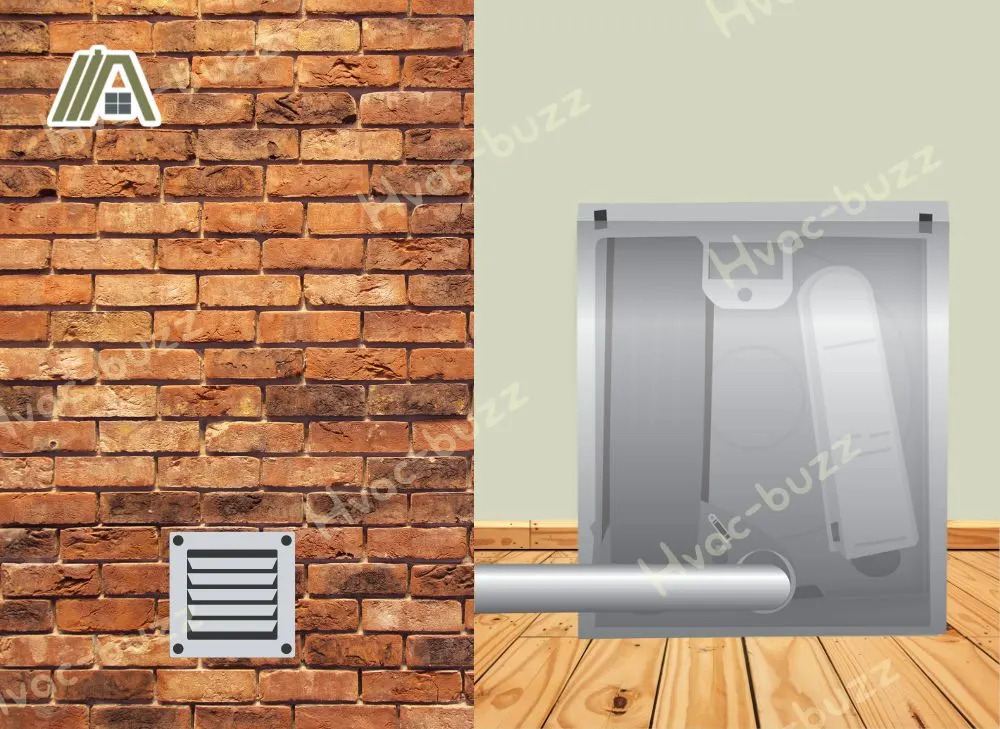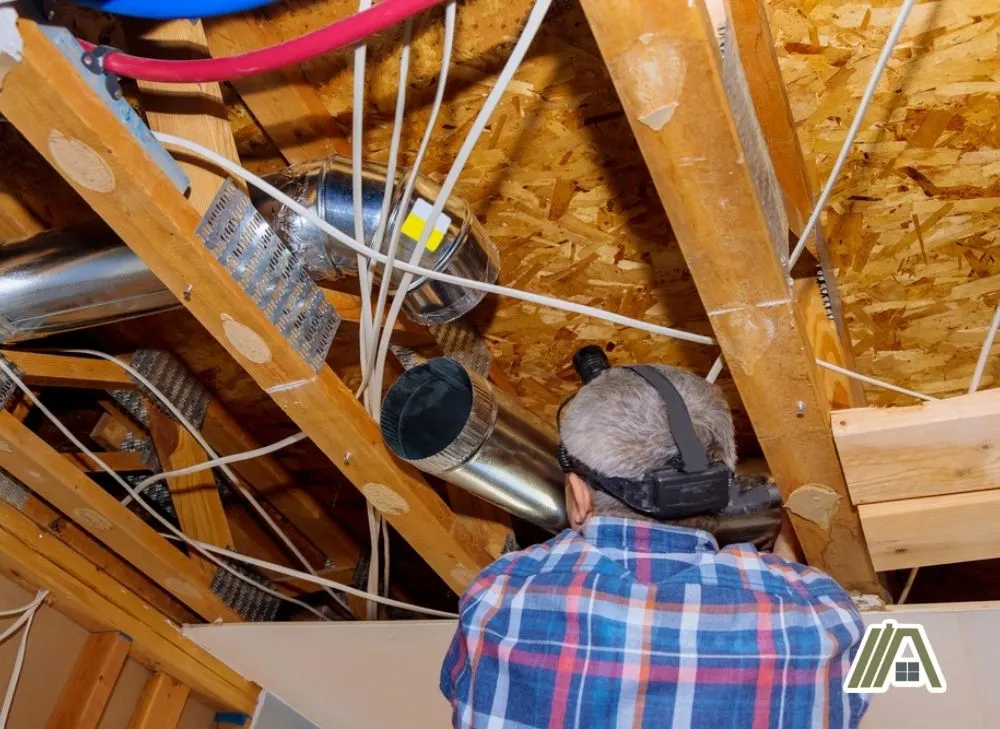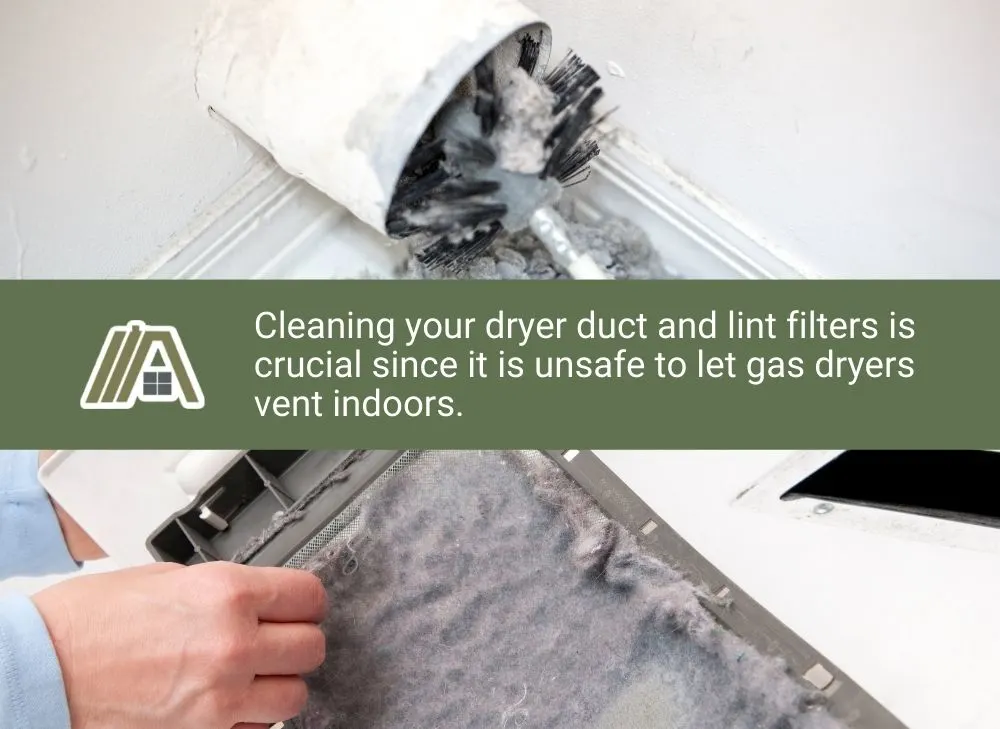If you can believe it, dryers are one of my favorite topics, so I know a lot about what is safe and what is not. It also means I’m familiar with the listed perils of carbon monoxide and combustion gases you frequently come across with these appliances.
You barely need to mention gas dryers before the internet clangs the warning bells. So, your concern over where combustion gases go from your dryer is valid. Here I will explain how combustion gases are dealt with in the dryer and where your concern should lie in keeping the machine operating safely.

Gas dryers must be equipped with a single vent that leads to the outdoors. These dryers are designed to vent dryer exhaust and combustion gases through one system. This is why it’s vital to adhere to code requirements for the ductwork and to keep the ducts and filters clean.
Gas Dryers Only Need One Vent
Gas dryers require one single vent. This vent is vital, and the building code and the design of the dryer ensure that this one vent sufficiently upholds safety standards.
Only one vent is needed for a gas dryer because the combustion gases and the cycle’s waste air (exhaust) all travel together. Thus, the gas byproducts and exhaust follow the same path from the burner housing to the exhaust vent.
Combustion gases are produced as the gas fuel is ignited in the burner housing. The blower pulls air into the dryer, past the heat source and thermal energy transfers to the air, which then enters the drum.
Here, the hot air evaporates moisture from the tumbling load (it also picks up lint fibers), and the mixture of hot, humid air and the combustion gases passes into the dryer vent on the other side of the drum.
The air and combustion gases are then blown from the internal vent to the dryer’s exhaust terminal, which connects to the exhaust ductwork that leads outside the house.

Why Is There No Separate Vent for Combustion Gas?
Gas dryers are really interesting appliances since they are a combination of exhaust appliance and combustion appliance. Both types of machines have specific air supply and venting requirements, and it seems odd that you can just combine the two systems so simply.
So, I understand if you are concerned; after all, you will face many problems if a dryer is not vented properly.
However, dryer exhaust vents are designed to exhaust waste (like lint and moisture) and unwanted things (including carbon monoxide and any carbon monoxide) resulting from running a dryer.
There is no need for a separate combustion vent for two reasons:
- Combustion gases are not channeled along a different path to the air in the dryer. Designing a system that did this would overcomplicate the matter.
- The way that the exhaust ductwork is set up is designed to ensure that nothing venting from your dryer enters the house.
Thus, the same instructions, measurements, and placements that keep your home safe from lint, heat, and moisture, are of the same standard as keeping your home safe from combustion gases.
They simply need to be exhausted out of the house (a distance from openings) to release the combustion gases into the larger external climate, where they become harmless in concentration.
You don’t need to attempt to add a vent, either. Theoretically, invasive modifications to the dryer casing and internal mechanisms would be required. There are several problems with this, but I will name a few significant issues:
- Isolating the combustion air.
- You need the heat from the flames to heat the air entering the drum. Yet, the gases are produced in this same space.
- You would need to somehow enclose the flame in a container that transmits heat but is airtight.
- You would also need to supply air to this container because combustion relies on it.
- Such a setup may increase the chance of a compromised combustion air supply, thereby also increasing the risk of carbon monoxide formation.
- Accommodating the extra ductwork.
- Ceilings and walls are not the largest of spaces and there is already a whole bunch of unsightly infrastructure that needs to be hidden, including electrical wiring, water pipes, gas lines, and HVAC ductwork.
- Trying to install a double ventilation system is going to prove tricky.
- It will also make any repairs to either ducting system more difficult.

- It would interfere with the safety and efficiency of the dryer’s functioning.
- Dryers are designed to work safely and effectively. They even have to meet safety and function standards, which are carefully thought out, tested, and approved.
- Modifying your dryer can easily compromise this and turn your dryer into an appliance that is no longer considered safe in the home.
- You end up voiding warranties, compromising insurance, and you may even face fines and charges if something goes wrong as a result of your tinkering.
Do Gas Dryers Require Special Venting?
Detailed instructions in the building code govern gas dryer ductwork. Thus, gas dryers require very specific venting, with specified duct dimensions and lengths, and have strict regulations for where and how the vent can terminate.
Gas dryers do not, however, have special venting requirements in comparison to vented electric dryers. These are the standard exhaust system rules and procedures for venting any dryer.
So, if you are wondering whether you need to adjust your ductwork to switch from an electrical to a gas setup, the answer is no. The adjustments come when you are adding the gas line or providing makeup air when required.
Preventing Duct Blockages Is More Important
Despite there being no separate, special venting for the combustion gases, there are some other considerations due to their presence in the exhausted air.
It becomes essential to prevent the occurrence of blockages in the ducts. These result from the buildup of lint and dust within the duct run when the ducts and lint filters are not regularly or properly cleaned.
Blockages slow and prevent the exhausted air from venting outside correctly. Since the combustion gases are exhausted with the dryer’s exhaust, this can pose additional dangers to your home and health.
Both carbon dioxide and carbon monoxide (the latter being significantly more dangerous) are hazardous to your health, as they displace oxygen in the blood and cause varying symptoms of asphyxiation.
The combustion byproducts are also flammable, which can lead to fires and explosions, especially when paired with the flammable lint fibers, heat, and open flame, which are all present in gas dryers.
There are also problems with gathering lint and trapped moisture, including mold, electrical shorting, leaking ducts, and fires.

So, cleaning your dryer duct and lint filters is crucial since it is unsafe to let gas dryers vent indoors, even if only some of the exhaust is not being removed.
